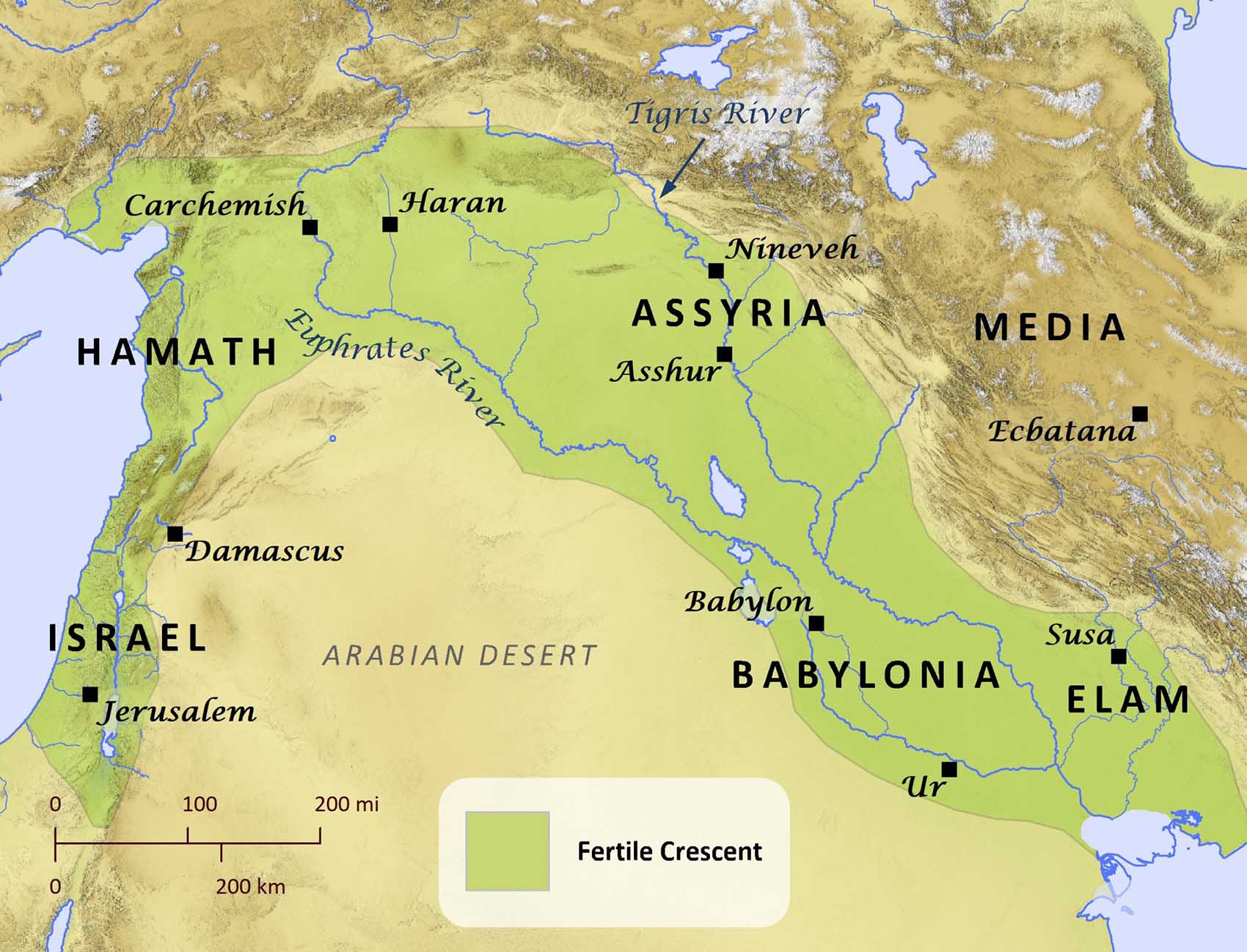King Nebuchadnezzar builds a golden statue and summons his sub-rulers to come see it.
The centerpiece of this chapter is introduced in the first sentence. Nebuchadnezzar made an image of gold, perhaps inspired by the statue he dreamt of in Chapter 2. It is six cubits in width, and sixty cubits in height. In modern measurement, it likely towered ninety feet tall, and was nine feet at its base. The statue’s image is not specified, but is clearly close to Nebuchadnezzar’s heart; he calls his subordinates to worship it and decrees a terrible punishment for those who refuse. This passion may imply the statue was of himself. As a wealthy, powerful king, Nebuchadnezzar had the image made of gold. His dream in Chapter 2 was of a statue made of various precious metals, with a head of gold. Daniel told the king, “You are the head of gold” (Daniel 2:38). Thus, it is possible that Nebuchadnezzar ordered that a statue of gold be built to boast of his powerful reign.
The statue was placed on the plain of Dura in the province of Babylon. There is no consensus on where exactly this plain of Dura was, though there are multiple cities and sites with similar names in Babylonian tablets. The statue may have been built near the city of Babylon. Regardless, a field is a perfect place for a 90-foot-tall statue. Anyone in the province would be able to see it from far off due to its height and prominence on an open plain.
Nebuchadnezzar did not simply build the statue for artistic reasons or to show off his wealth and power; the statue was made for a specific purpose. With it, the king would demand total obedience and humiliation from his governmental underlings. The passage says he summoned all the rulers in his kingdom, the satraps, the prefects and the governors, the counselors, the treasurers, the judges, the magistrates. Driving the point home, the author finishes this list with and all the rulers of the provinces. Leaders were summoned from a broad spectrum of Nebuchadnezzar’s administration. The king summoned them for the dedication of the image, the revealing of this mighty statue made in the king’s honor and at his command.
Shadrach, Meshach, and Abed-nego were Jewish exiles who were friends of Daniel. Their Hebrew names were Hananiah, Mishael, and Azariah (1:6). They belonged to the ruling class of the province of Babylon due to Daniel’s promotion in Chapter 2: “And Daniel made request of the king, and he appointed Shadrach, Meshach and Abed-nego over the administration of the province of Babylon, while Daniel was at the king’s court” (2:49). As a reward to Daniel, the king put him in a place of authority. Using his authority and favor with Nebuchadnezzar, Daniel put his friends in administrative positions. So, when all the rulers of Babylon were summoned to see the king’s golden statue, Shadrach, Meshach, and Abed-nego numbered among the crowd.
We are not told specifically why Daniel was not included in this story. It could have to do with the relative positions of Daniel and the others. Daniels’ three friends were appointed to the administration of the province of Babylon, which was the group targeted by the king, while Daniel was a member of the king’s court. It could be that the king’s court was excluded from the loyalty test because it was deemed to already be loyal to the king.
Biblical Text:
Nebuchadnezzar the king made an image of gold, the height of which was sixty cubits and its width six cubits; he set it up on the plain of Dura in the province of Babylon. 2 Then Nebuchadnezzar the king sent word to assemble the satraps, the prefects and the governors, the counselors, the treasurers, the judges, the magistrates and all the rulers of the provinces to come to the dedication of the image that Nebuchadnezzar the king had set up.
Check out our other commentaries:
-
Hebrews 2:9 meaning
Christ humbled Himself lower than angels by becoming a man and living the life of a human. ...... -
Matthew 13:24-30 meaning
Matthew records Jesus’ second parable concerning the kingdom of heaven. He compares it to a man who sows good wheat in his field, but later...... -
Philippians 1:1 meaning
Paul and Timothy greet the believers in Philippi, including the elders, who tend to the spiritual needs of the believers, and to the deacons, who...... -
Romans 8:15-16 meaning
Christians have been spiritually adopted by God. We are not slaves who are afraid of their old evil master, but sons taken in by a...... -
Romans 3:10-12 meaning
Paul further makes his point that all are under sin by quoting the Old Testament, reiterating that we are all sinners and cannot do good......



